- October 17, 2023
Alternatives to Declawing Cats: 10 Vet Approved Options To Consider
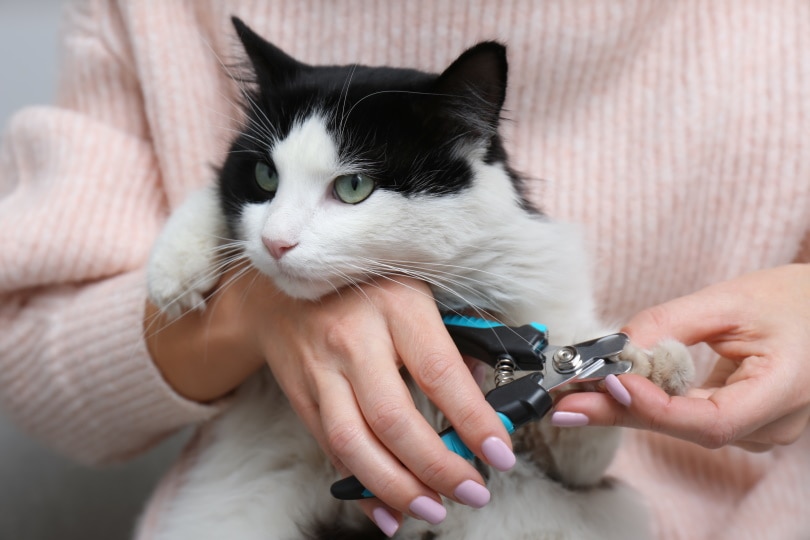
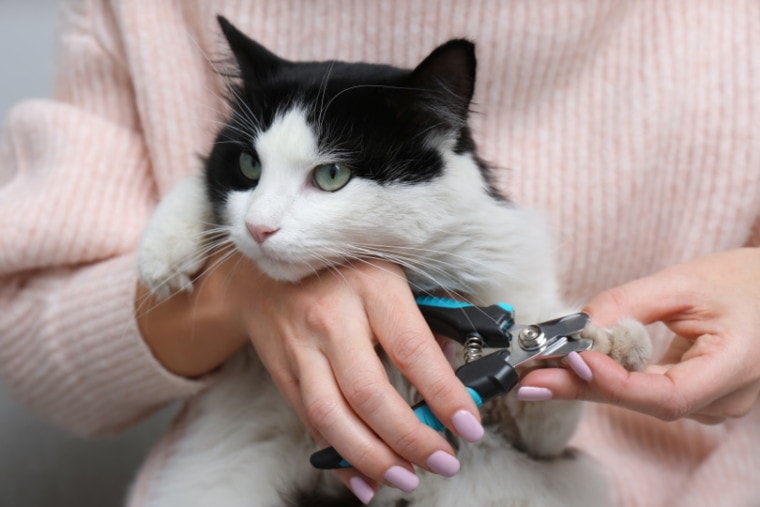

The information is current and up-to-date in accordance with the latest veterinarian research.
According to the American Society for the Prevention of Cruelty to Animals (ASPCA), roughly 3.2 million cats end up in shelters each year. While most are strays, 42% are relinquished because of behavioral issues, such as scratching and ruining household items.1 Declawing became the preferred solution. It started with exotic animals in the film industry in the late 1960s before entering small animal practices.2
However, many animal welfare organizations oppose the procedure. The American Veterinary Medical Association (AVMA) and The Cat Fanciers’ Association (CFA) are strongly against routine declawing. They recommend it only as a last resort if euthanasia or surrender of the pet is on the line. Fortunately, several alternatives exist without resorting to a procedure with potential adverse consequences.3

What Is Declawing?
The process of declawing is not just the removal of the claw (although that would be bad enough), but involves the amputation of the last bone on each digit. Look at the end of your finger and picture having it cut off at the first knuckle; this is what declawing is. It is cruel, unnecessary, and illegal in many countries, which is why many are trying to get it banned in the US as well.
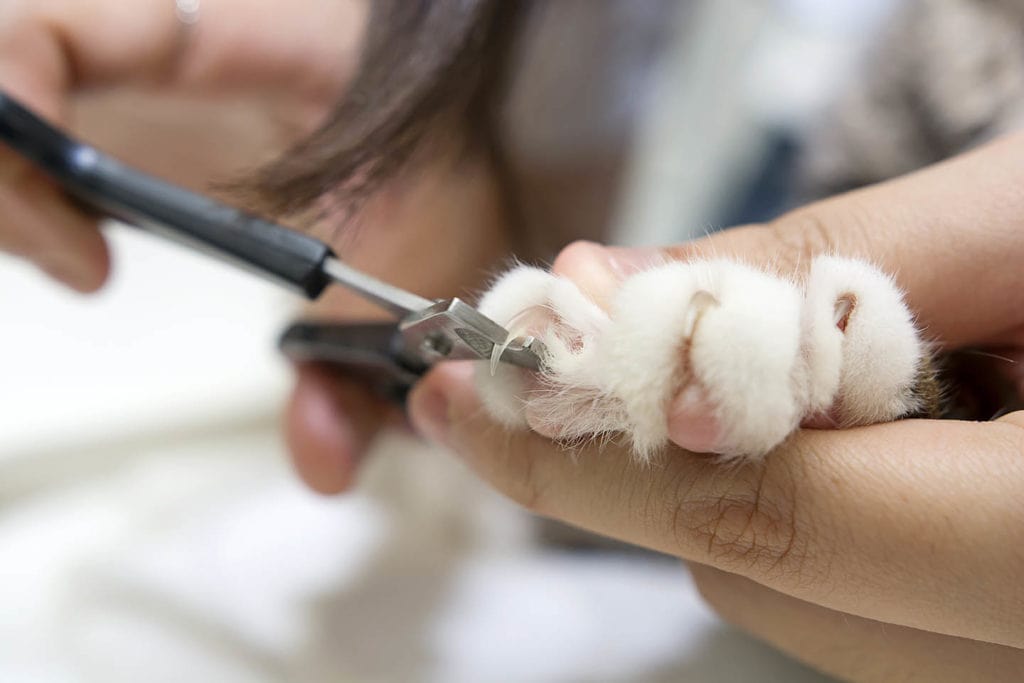

Top 10 Alternatives to Cat Declawing
Here are 10 alternatives to this barbaric procedure, but as always, talk to your vet if you have any other questions or concerns.
1. Remove Access to Certain Objects and Places
If your cat scratches a particular object, the easiest solution is to bar access to it. You can physically remove the item, cover it with something, or keep your pet from entering that room. While it will undoubtedly work, it doesn’t eliminate the problem. It’s only a temporary fix. Your kitty will likely turn their fancy toward something else. Besides, it’s not always practical.

2. Use a Deterrent on the Furniture
Cat owners know that their pets can be particular about many things, whether it’s the litter you get or the food you offer. The same finicky nature applies to the surfaces they walk on or use. One excellent way to keep your furniture safe is to use double-sided sticky tape on the places where your cat has started scratching. Aluminum foil is another option. Your pet won’t like the feeling and will avoid it.
This alternative works if you must only protect a small area. It’s not the best choice if you come in contact with the deterrent. However, you may find that your cat avoids the object after only a few encounters with the tape or foil, and you won’t need to leave your furniture covered in foil for too long!
3. Use a Pheromone Spray
One of the reasons that cats scratch is to mark their territory. They may spray conspicuous objects or scratch them, leaving an equally suitable warning to interlopers. You may find that using a pheromone spray can eliminate this drive. The product smells comforting to felines and can curb unwanted behavior like scratching. You won’t smell the spray but your cat will. It can also ease tension between other pets.
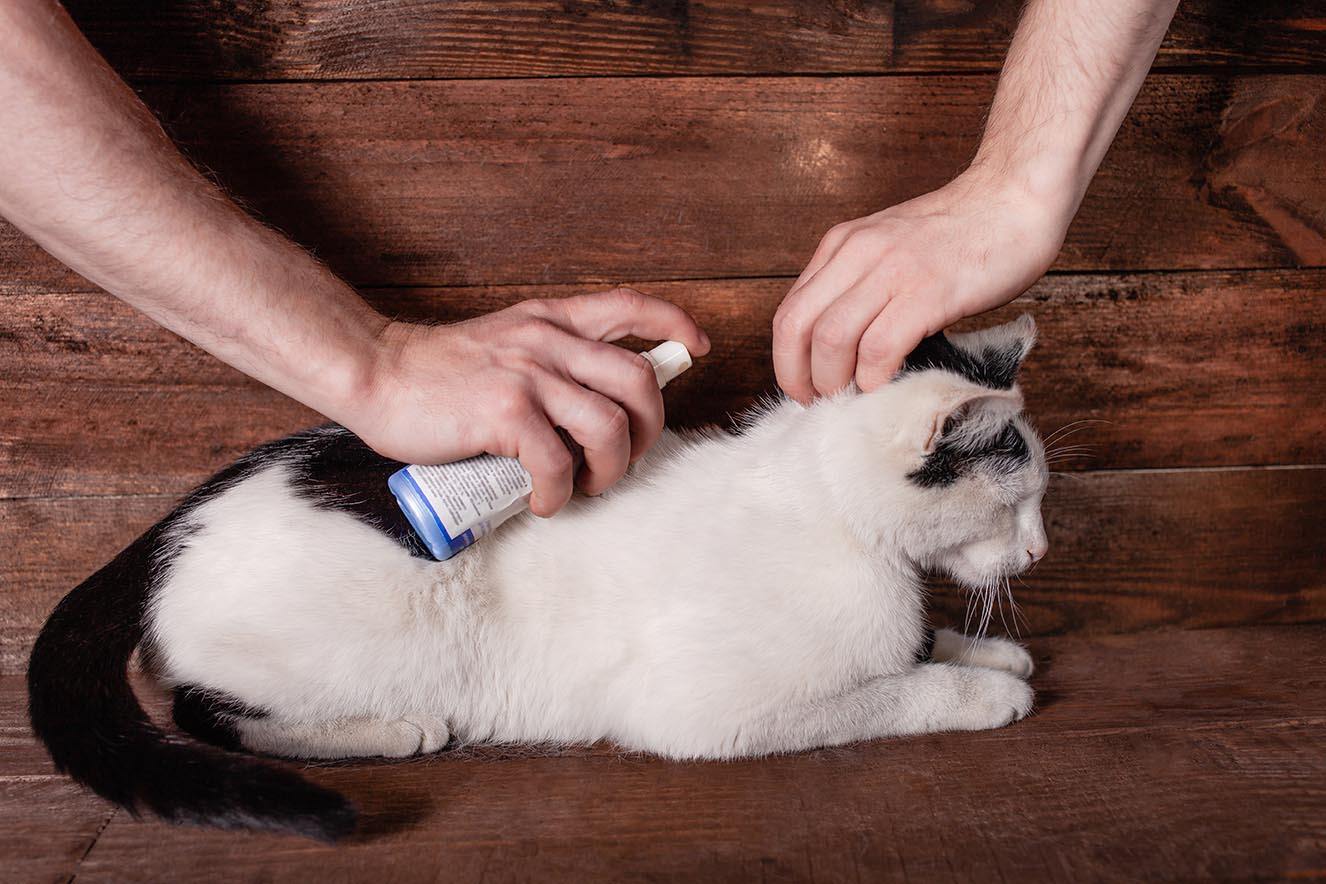
4. Trim Your Cat’s Nails
While we don’t recommend declawing, trimming your pet’s nails can make scratching less destructive without the razor-sharp points. You should do it at least every 2 weeks, maybe even more often. The frequency will help your cat get used to the process. However, offering your kitty a treat afterward will make it a win-win solution.
5. Use Nail Caps
Another alternative is to use nail caps on your cat. They fit over the tips of your pet’s claws. The plastic caps keep the sharp end of their nails from doing damage to your belongings. You’ll need to replace them every 4 to 6 weeks. Of course, this solution assumes you handle your cat frequently since you have to put them on without getting scratched in the process.
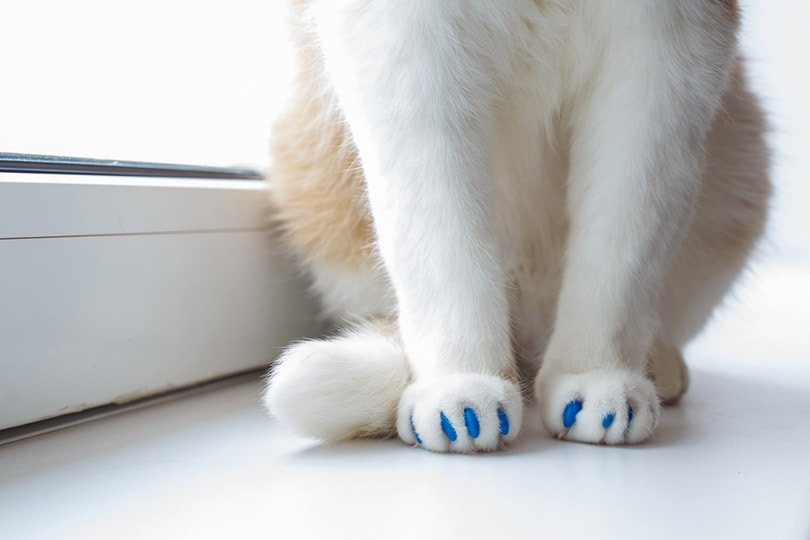
6. Provide a Suitable Alternative
Perhaps the best solution on our round-up is not to fight your cat’s instinct but redirect it to something more appropriate, such as a scratching post. Researchers discovered that cats prefer upright posts versus ones on the floor. They also like textured surfaces like sisal or cardboard instead of soft materials.
Catnip or silver vine provide potent motivators to get the cats to use the posts and increase the time they scratch them. You should provide at least one per cat in your household. You can place it where your pet routinely scratches, such as next to your furniture or their favorite spot on the carpet.
Make sure it is sturdy, and tall enough for your cat to reach up to. Short scratch posts are rarely used.
7. Train Your Cat
We strongly urge you not to punish your cat for scratching. It’s an instinctive behavior for them. Instead, use positive reinforcement to redirect their actions. Felines respond well to praise, especially if you and your pet have bonded. Let your cat know you’re pleased when they use the post. If they try to scratch something inappropriate, give them an acceptable alternative. They’ll quickly make a positive association.
If you catch your cat in the act of scratching your furniture, a quick “hiss” is usually enough to get them to stop, without actually punishing them. Yelling or spraying water will only generate resentment.

8. Prevent Boredom
Some pets become destructive simply because they’re bored. Felines are more intelligent than you may think. They need mental stimulation to be content in their world. You can provide it by interacting with your cat more often. It’ll also strengthen your bond. You can also give your pet interactive toys to keep them occupied. This solution is best used in conjunction with one or more of our alternatives.
Remember that your cat views their environment vertically, as well as horizontally, so look for ways to utilize high spaces with shelves or cat walkways to make their space more interesting. There are loads of options, that can help make the most of your vertical spaces, and give your cat some great places to sharpen those claws.
9. Discuss Neutering or Spaying Your Cat With Your Vet
If your cat is still intact, we suggest discussing neutering or spaying with your pet. It can curb the drive causing your cat to mark their territory and spread their scent.
10. Consult an Animal Behaviorist
If nothing has seemed to work, we suggest reaching out to an animal behaviorist. They may have other suggestions that may work in your case. Every cat is different. Environmental factors play a significant role in animal behavior. A professional can help you find other ways to stop the unwanted scratching without taking drastic action.


Why Cats Scratch & How to Control It
Understanding why cats scratch can help you understand the feasibility of our various alternatives. We mentioned that it’s instinctive. Your pet isn’t ruining your stuff out of spite. They are hardwired to engage in this behavior. Scientists theorize that scent marking is probably the primary reason. Wild felines often use the same trees or objects to scratch. You’ve probably noticed the same with your pet.
That makes putting a scratching post somewhere they already use a reasonable option. Cats also scratch and stretch when they wake up or when a household member returns. Therefore, you can put one near their favorite sleeping spots or by the entryway. If your cat doesn’t seem interested in the post, try the olfactory incentive, i.e., catnip.
Contrary to what many cat owners believe, cats do not use scratching posts (or furniture) to wear their claws down, but it helps remove the dead, flaking outer layers, and keep them in tiptop condition, which is sharp.
Observe your cat and determine if there’s a pattern to their behavior. That can provide valuable clues for choosing and implementing the best solution.
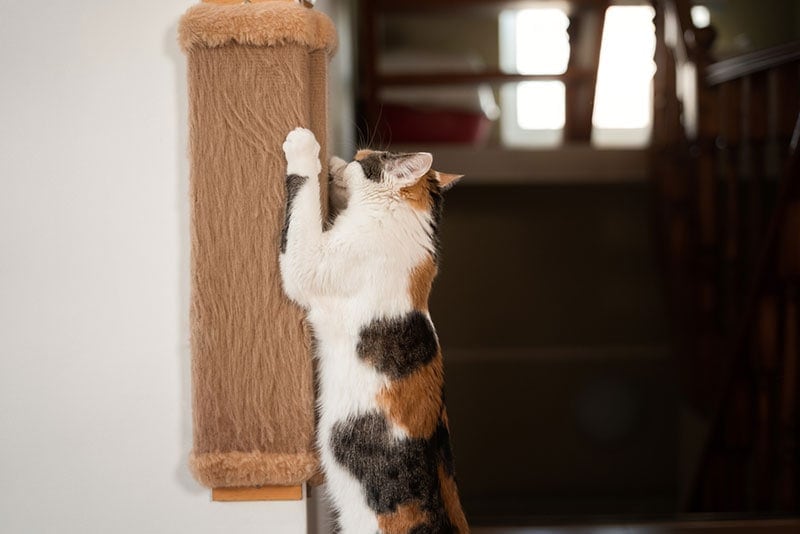

Conclusion
No one wants to buy nice furniture only to have it damaged. Unfortunately, cats can’t distinguish between a tree or a $1,000 recliner. You may not be able to stop the behavior altogether, but you can redirect it or minimize the consequences. Don’t hesitate to consult your vet if nothing seems to work. Hopefully, relinquishment is not even on the table.
Featured Image Credit: New Africa, Shutterstock
Tags
What do you think?
Related Articles

New Puppy Checklist: Gear You’ll Need for Your New Dog
Getting a new puppy is really exciting, but before you welcome them home, it’s important to prepare your space for them. Since puppies need a

How Big Do Mini Poodles Get? Vet Reviewed Average Weight & Growth Chart – Dogster
The information is current and up-to-date in accordance with the latest veterinarian research. Learn more » When you buy a Miniature Poodle, you might not

Can Police Dogs Smell Nicotine? Vet Verified Facts & Info – Dogster
The information is current and up-to-date in accordance with the latest veterinarian research. Learn more » While cigarette sales have been declining steadily for decades,

How Old Is 5 in Dog Years? Vet-Approved Guide to Each Size of Dog – Dogster
The information is current and up-to-date in accordance with the latest veterinarian research. Learn more » A common method for calculating a dog’s age is

